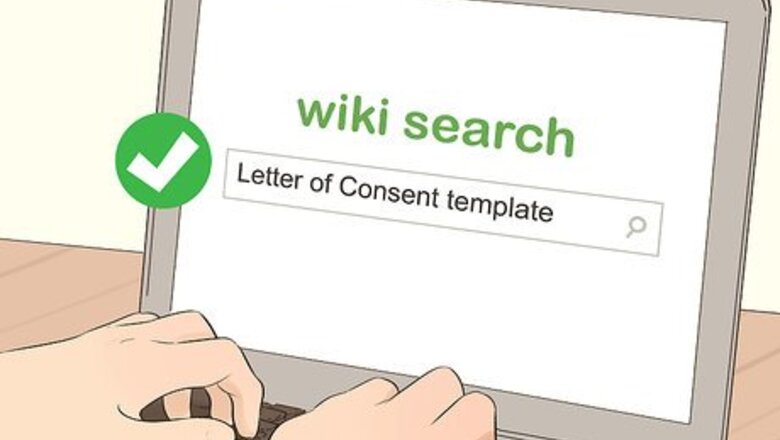
views
Formatting Your Letter
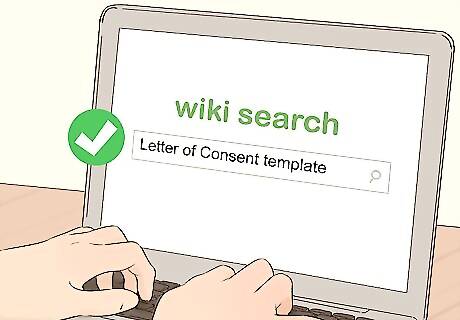
Use a template if possible. There are templates available for many letters of consent, particularly those that are legally required or must be sent to a government agency. By using a template, you ensure that your letter includes all the legally necessary information. For example, if you're writing a letter of consent for your child to travel abroad, your country's embassy or state department typically will have a template or form you can use. Government agencies also have templates available for letters of consent related to business transactional matters, such as the use of intellectual property.
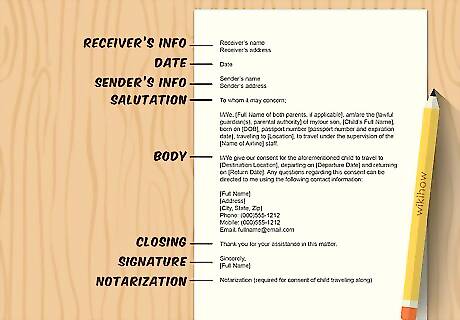
Use formal business letter format. If you have to draft your letter of consent by hand, organize it as a formal business letter. Most word processing apps have templates that will format your letter like this for you, with the correct margins and spacing. Note: You may write your letter by hand if you need, but make sure your handwriting is legible and try to follow a template. Typed letters will feel more formal, but always make sure to sign the bottom in ink. Choose a professional, legible font. The default font on your word processing app is typically appropriate, or you can use something more formal, such as Times New Roman.
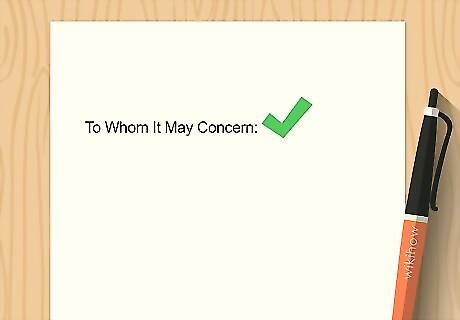
Identify the appropriate recipient of the letter. If your letter is addressed to a specific person, include their name on the salutation line. Typically you'll use "Mr." or "Mrs." However, if you don't know the gender identity of the recipient, simply use their first and last name. If you don't know the name of the specific recipient of the letter, or if the letter will potentially be read by numerous people, simply use "To Whom It May Concern."
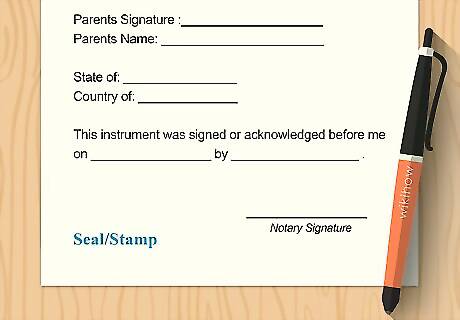
Create signature and notary blocks. The final part of a formal business letter is the signature block. In addition, you want to create a notary block so a notary can sign the letter and affix their seal. Remember to leave space after the closing of the letter for you to sign the letter, then type your full legal name below. You may also want to place additional contact information under your typed name. Search online for a notary block that is used where you live. You can typically find one that you can copy and paste into your own letter.Tip: Some letters of consent require 2 signatures. For example, if you're writing a letter of consent for your child to travel abroad, you may need the signature of both parents.
Writing Your Draft

Review any information from the original request. If you received a requesting a letter of consent, use the same language in your letter that was used in the request you received. This ensures you're not consenting to more than the person originally asked for. For example, if the person has asked your permission to use your property in a certain context, or for a specific purpose, you would want to include that information in your letter. Including that information makes clear that you are only consenting to that particular use, rather than consenting to blanket use of your property for any reason whatsoever.
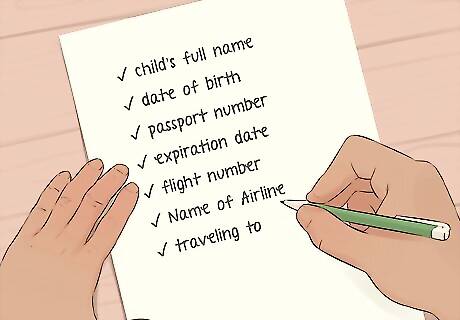
Gather specific details about the subject of your letter. Your letter of consent should describe in detail the person to whom you're granting consent. At a minimum, this requires providing that person's full legal name. Depending on the context of the letter, you might also need more information to sufficiently identify them. For example, if you're writing a parental consent letter for your child to travel to another country, you'll need details such as your child's full name, date of birth, passport number, flight number, and other travel information. You'll also need details about any adults the child is traveling with, or who they will stay with once they get to the other country.
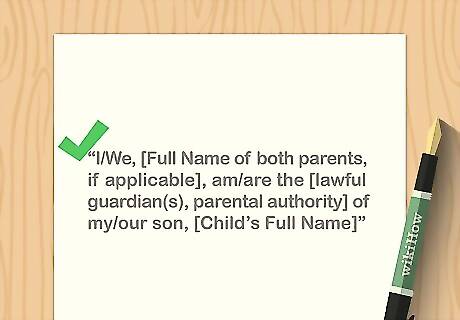
Identify yourself and your interest in the subject of the letter. In the first lines of your letter of consent, state your full legal name and your relationship to either the person you're granting consent or the property you're giving the person consent to use. For example, if you're giving someone permission to use your car, you would state your name and that you are the registered owner of the vehicle in question. If you're giving permission for your child to travel internationally, you would identify yourself as the child's parent. In that case, you may need to identify the other parent and get their permission as well.
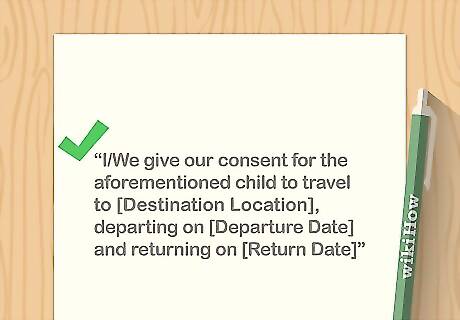
Describe specifically what you consent to. Include specific facts about the activity or use of property that you have agreed to allow. The description will differ depending on the purpose of your letter of consent. For example, in a consent letter for a child to travel abroad, you would include the names of adults traveling with the child, or who the child will be staying with when they arrive. If you are consenting to someone else's use of your property, describe that property specifically. For a vehicle, you would typically include the year, make, and model of the car, as well as the license plate number and VIN for the specific vehicle. If you were consenting to someone's use of your intellectual property, you would identify it specifically by title and date of creation. Include copyright or trademark numbers if you have those.Tip: Keep your consent simple and direct. For example, if you're writing a letter of consent for your child to travel internationally, there's typically no need to go into detail about what your child is going to do on the trip.
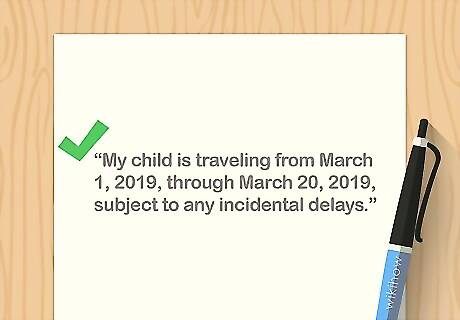
Limit the period of time for which your consent is valid. For most letters of consent, you intend to give permission temporarily for a brief period of time, not forever. Include either a specific period of time or an end date when your consent will no longer be valid. For example, if you were writing a letter of consent for your child to travel internationally, you might include the specific dates the child is traveling. Be sure to allow for any incidental travel delays. You might make a statement such as: "My child is traveling from March 1, 2019, through March 20, 2019, subject to any incidental delays." If you were allowing someone to use your car, you might include a statement that they are expected to return the car by a certain date.
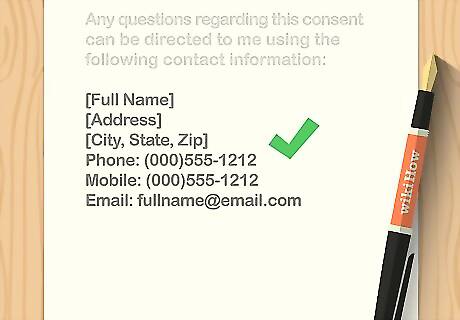
Include valid contact information. If there are any questions or concerns about your letter, someone in a position of authority may want to contact you. It can help to include the best times to reach you, or to list times when you are specifically unavailable. If you're writing a personal letter of consent and you work during the day, it would be appropriate to provide both your home and work contact information, along with the hours you're typically available at each place. If you're writing a letter of consent on behalf of a business or organization, you typically would only include your business contact information.
Making It Official
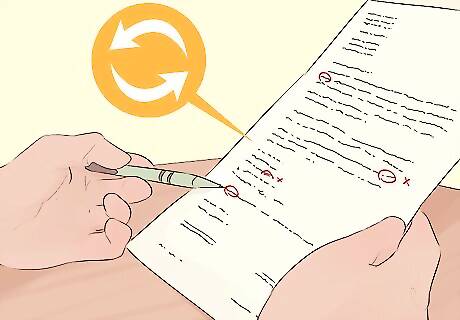
Proofread your letter carefully. Your letter may not be taken seriously if it has numerous spelling and grammatical errors. Read through it carefully, then put it aside for a day and look at it again with fresh eyes. When proofreading, start with the last word and move backward to the first, reading each word separately. Mistakes are easier to see that way.Tip: If you're writing the letter in a language other than your native language, you may want to have a native speaker read it over and check for any errors or awkward phrasing.
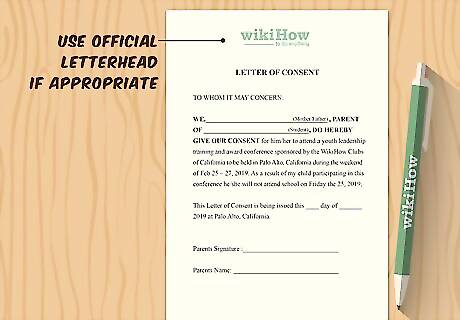
Print your letter on official letterhead if appropriate. If you're writing a letter of consent on behalf of a business or organization, or in your capacity as a representative of a business or organization, it should be on company letterhead. On the other hand, you shouldn't use business letterhead if you are writing the letter for a personal reason. For example, if you're writing a letter of consent for your child to travel abroad, you wouldn't normally put this on business letterhead – even if you own the business. The letter is related to a personal matter, not a business matter.
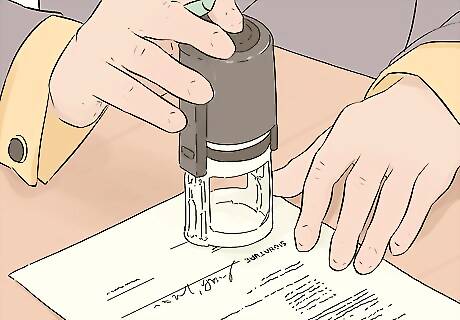
Sign your letter in the presence of a notary. If your signature is witnessed by a notary, it removes doubt that you were indeed the person who signed the letter. No one can argue that your signature was forged or that the letter was signed by someone pretending to be you. A notary does not review your letter or confirm its accuracy. They only verify that you are who you say you are and that your signature is legitimate.Tip: It's often a good idea to have several copies of the letter signed and notarized. Anyone who needs a copy of the letter should have one with an original signature and notarization, not a copy.
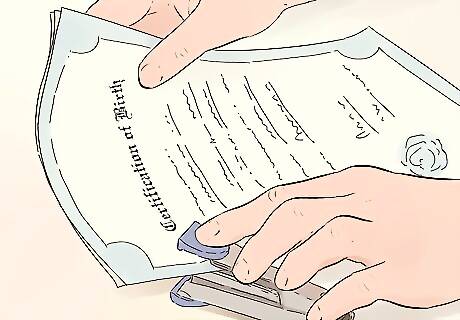
Attach documents to support information in the letter. For some letters of consent, official documents can provide evidence beyond the letter itself that the information contained in the letter is true and accurate. These may include copies of identification documents or certificates of ownership. For example, if you're allowing someone to use your car, you may include a copy of the registration or title as proof of ownership. If you're writing a letter of consent for your child to travel internationally, you may include a copy of the child's birth certificate as proof that you are the child's parent and that the child was born in the country you've stated. For permission to use intellectual property, you might include a copy of any copyright, patent, or trademark certificates.

Deliver the letter to the appropriate person. The person who receives the letter of consent depends on your purpose for writing the letter. In most cases, it will be the person to whom you are granting permission. You can either hand-deliver the letter or mail it to them. If you mail the letter, use a method that allows for tracking so you'll know when the letter was received. For example, if you're writing a letter giving a child permission to travel or conduct a particular activity, you'll typically give the letter to the child. The child may in turn hand it over to the person overseeing them, such as a teacher or other adult. In some cases, you'll need to mail your letter to a third party. For example, if you're writing a letter of consent for another business to use a trademark or corporate name similar to yours, you would send the letter to the government agency that approves corporate names or trademarks.



















Comments
0 comment